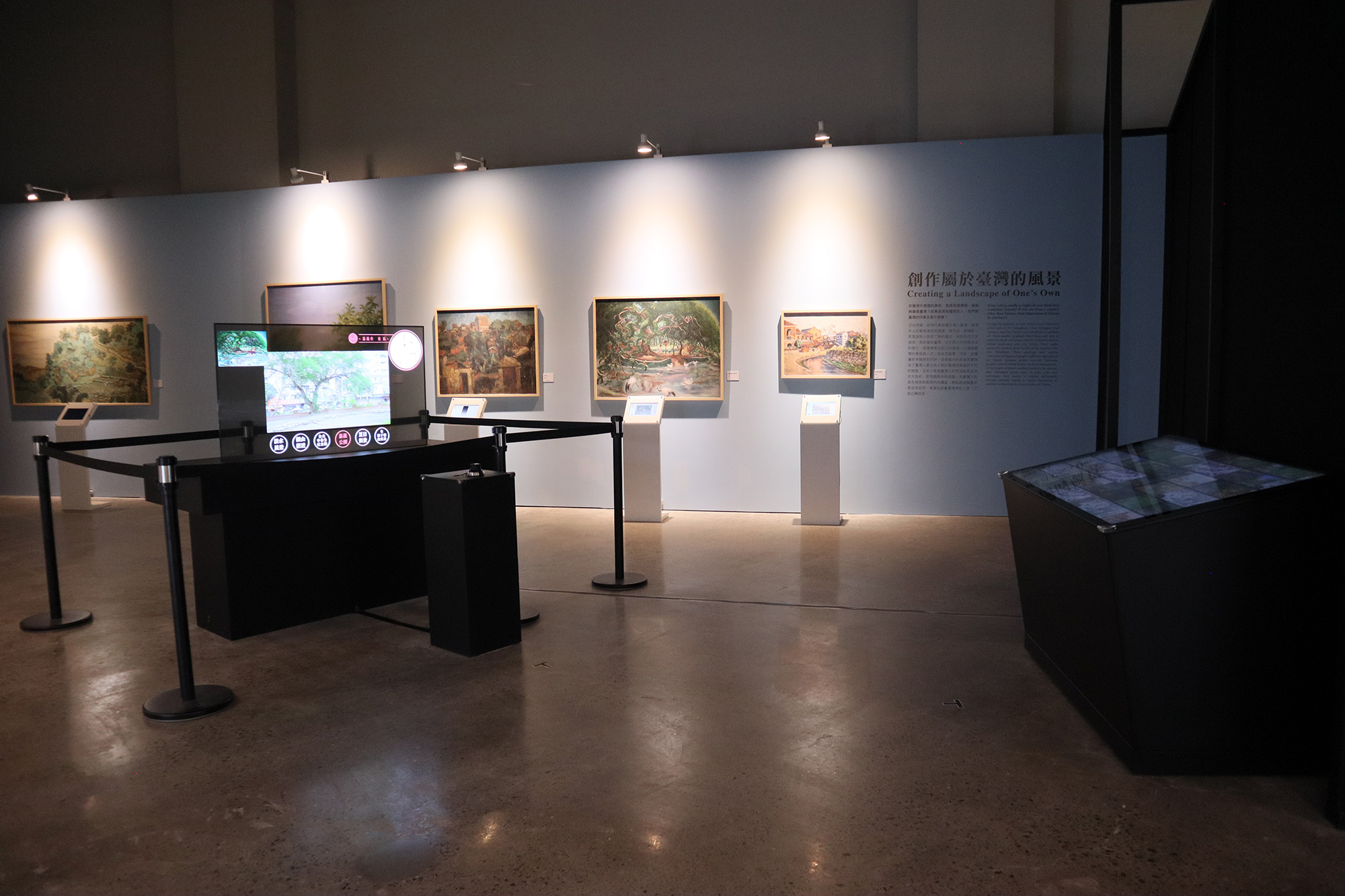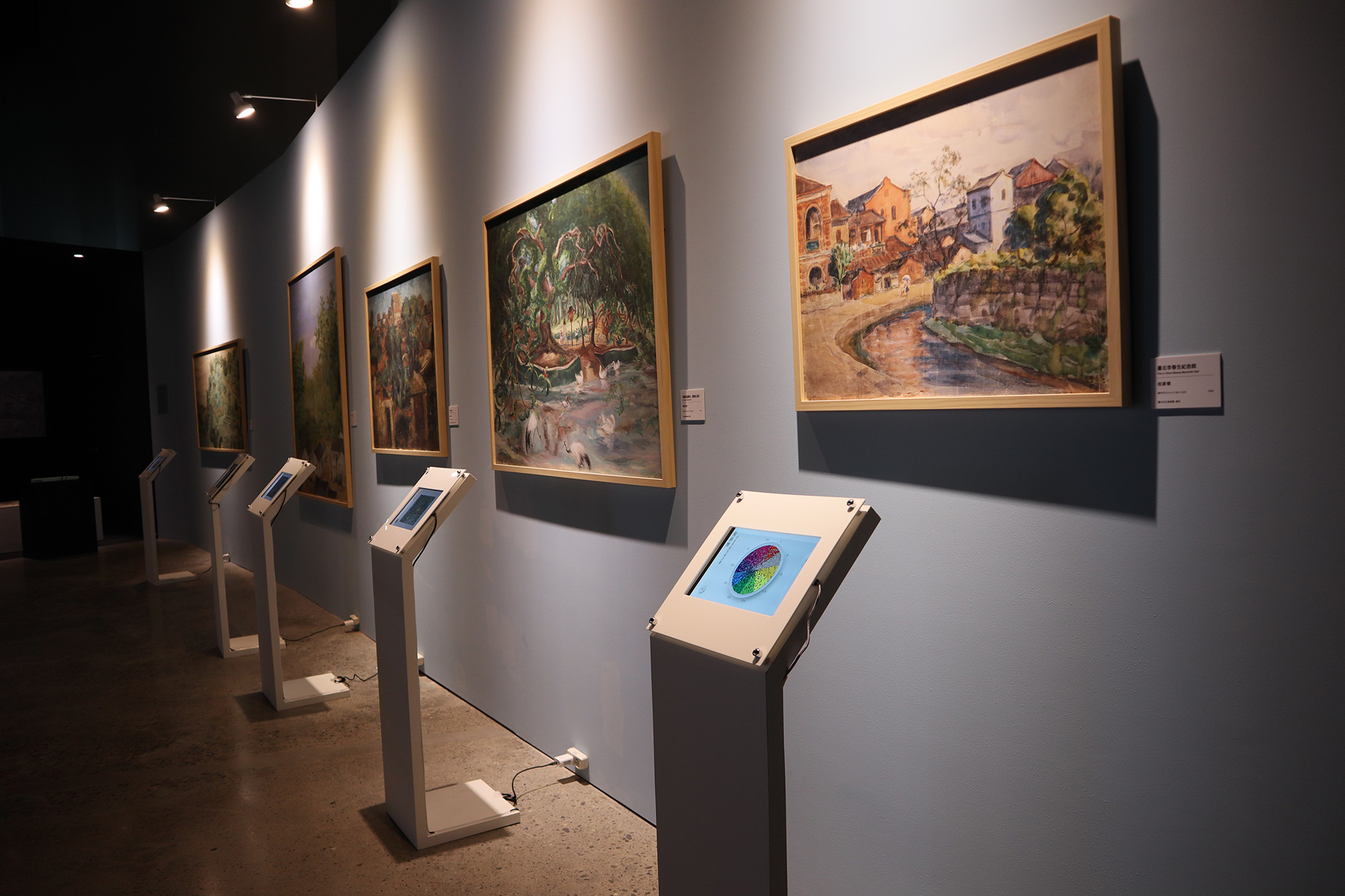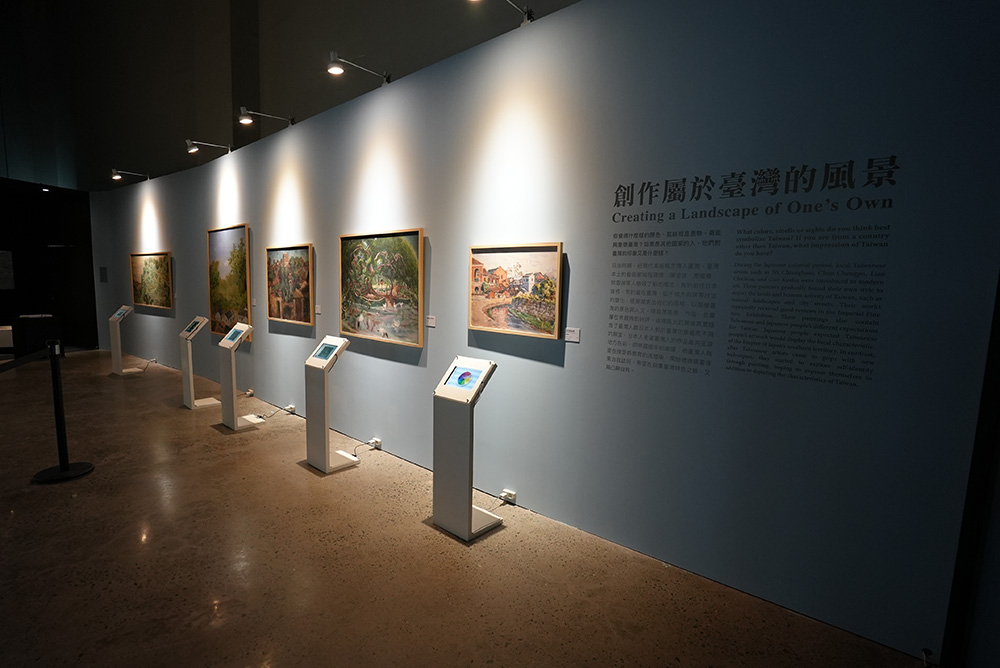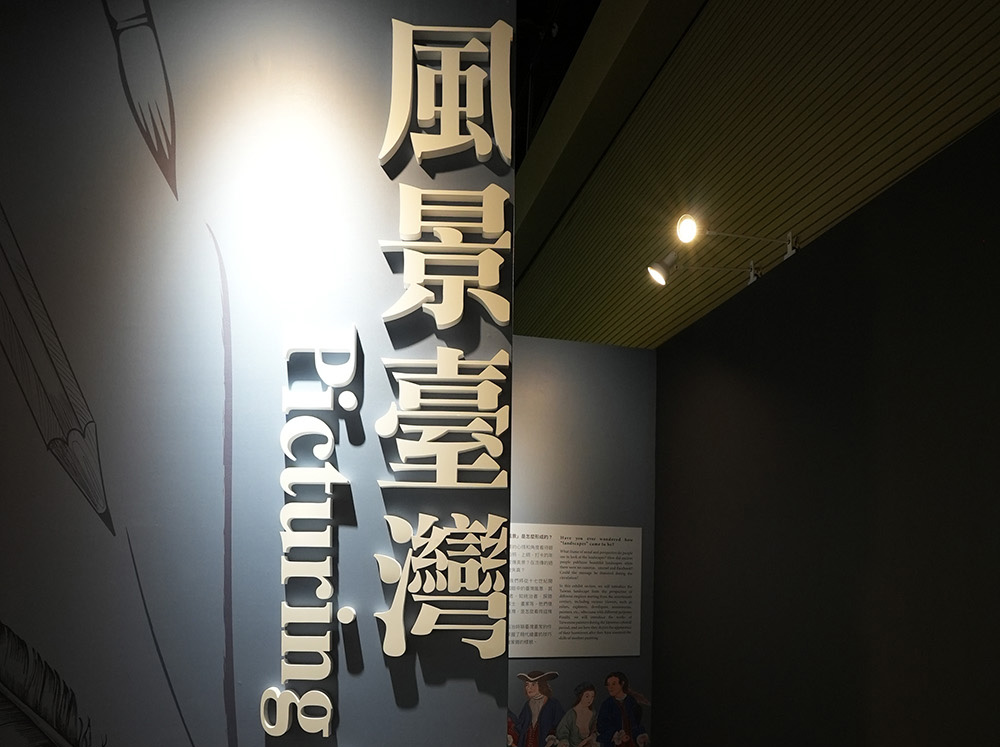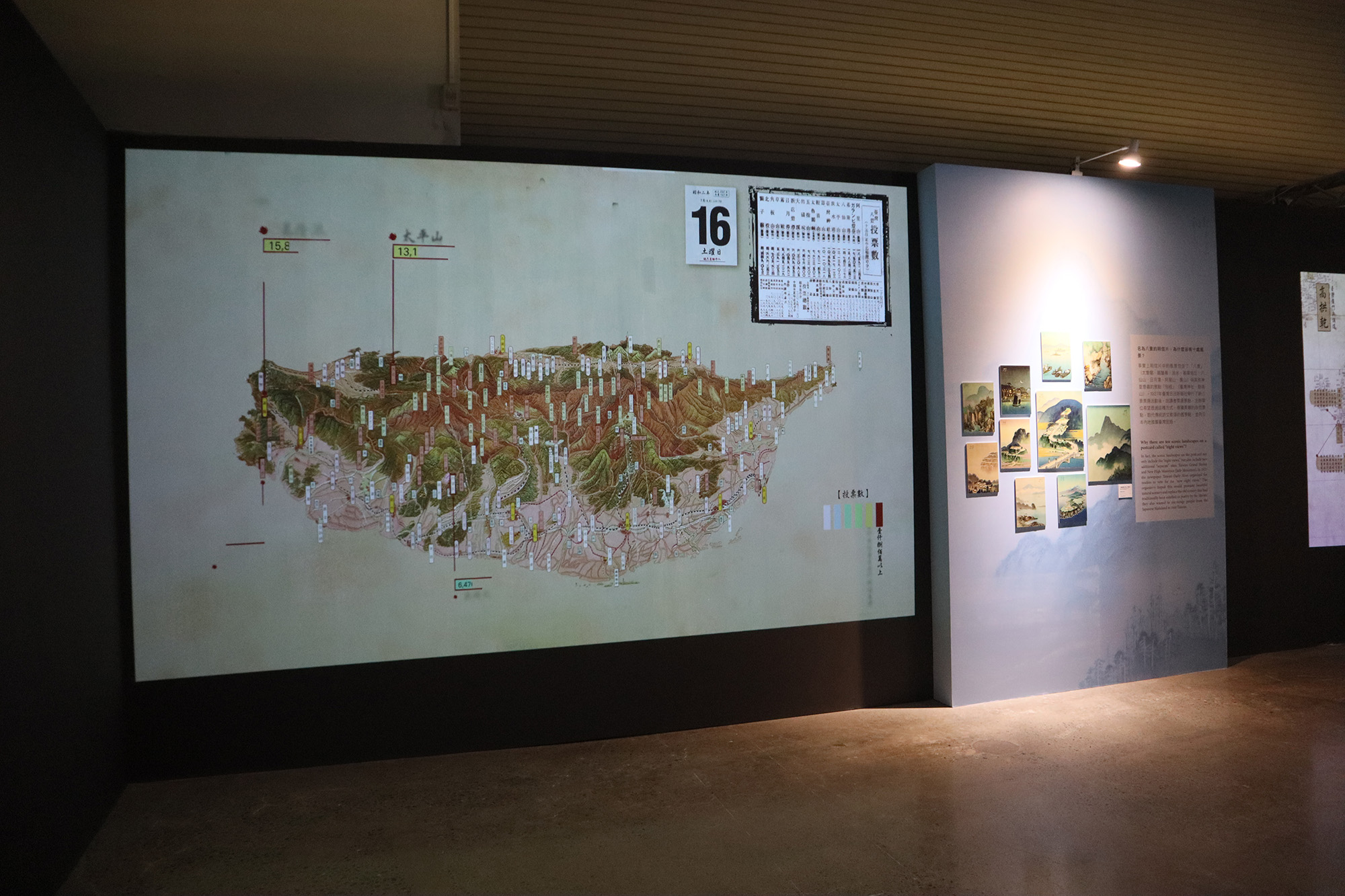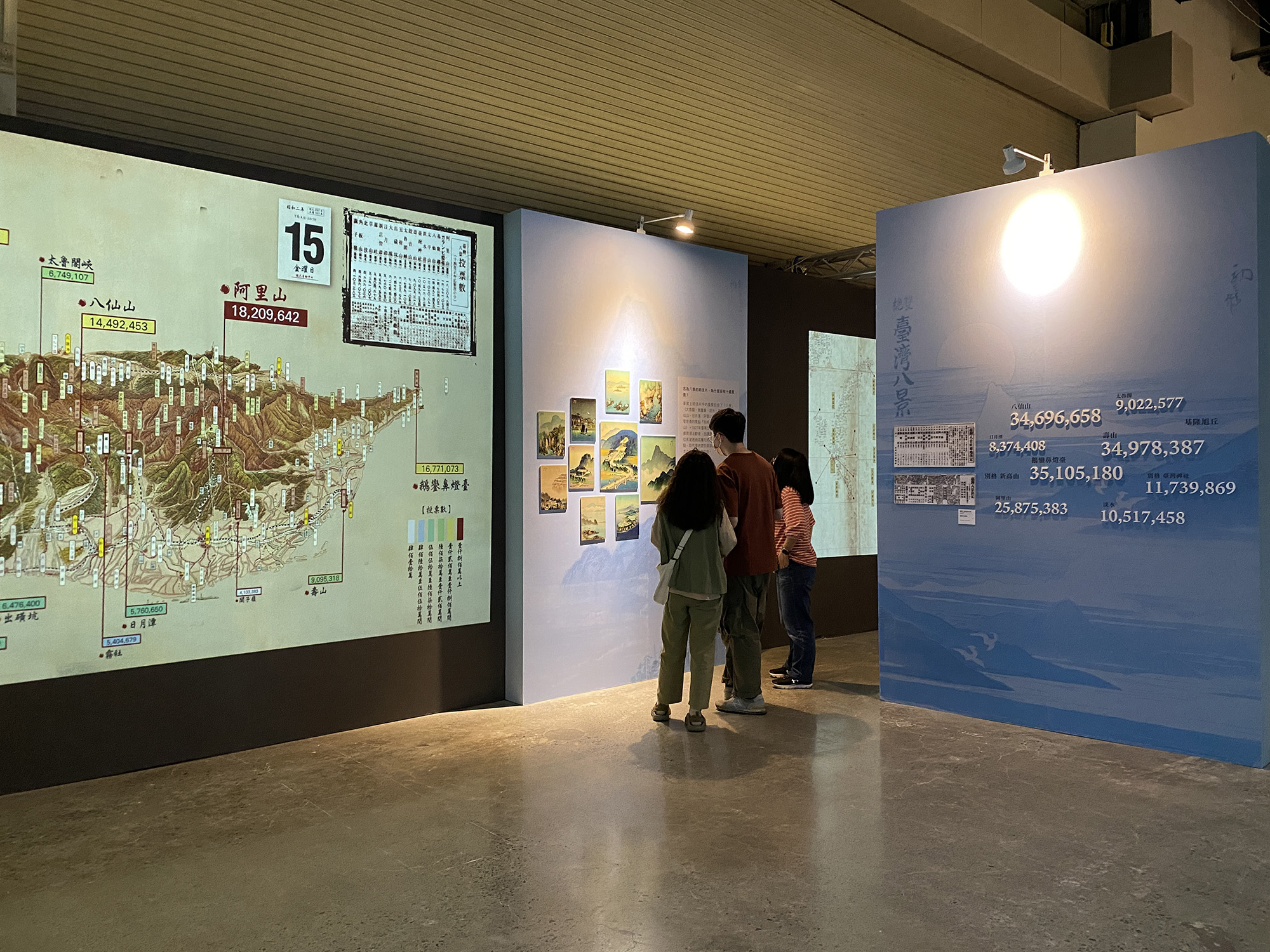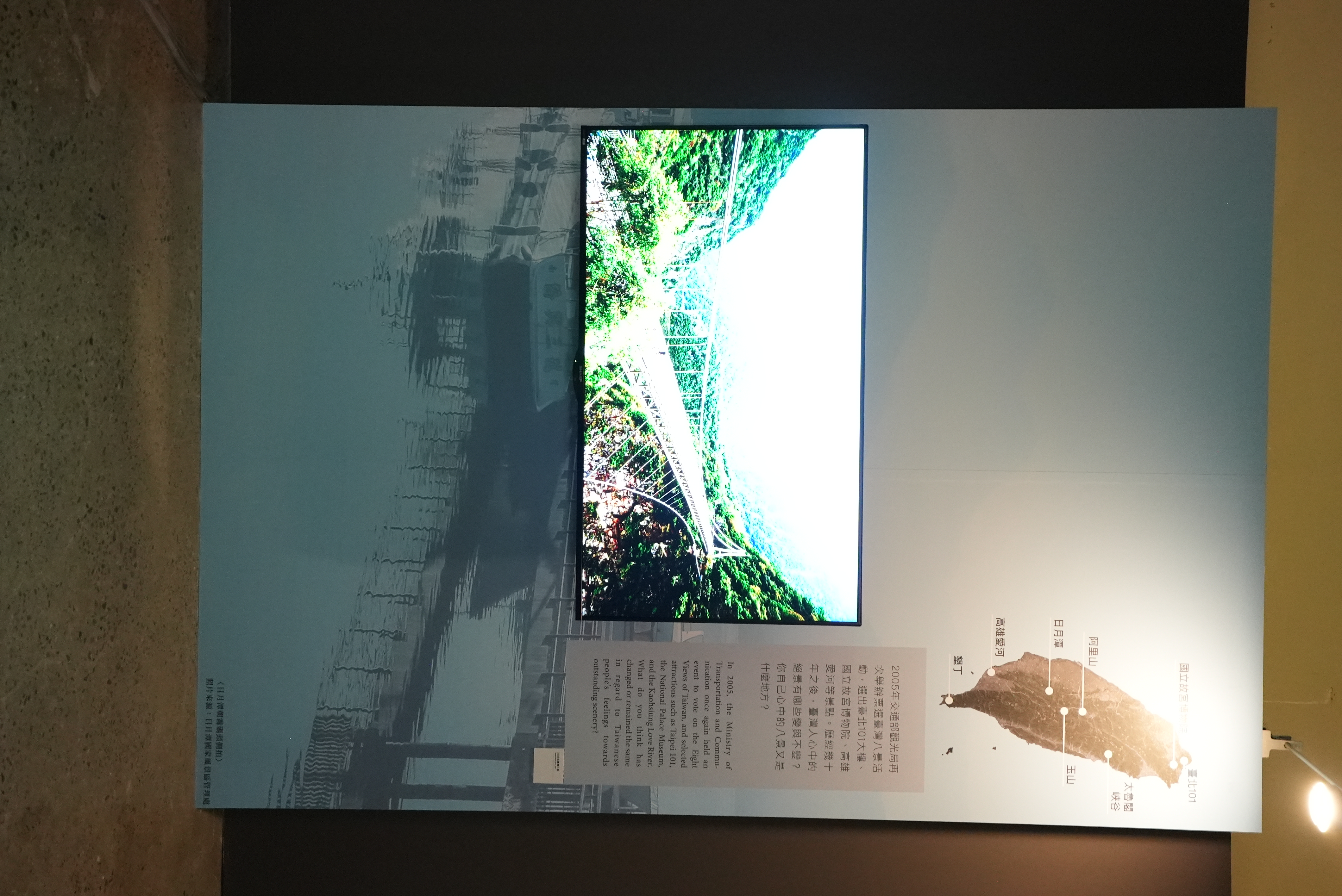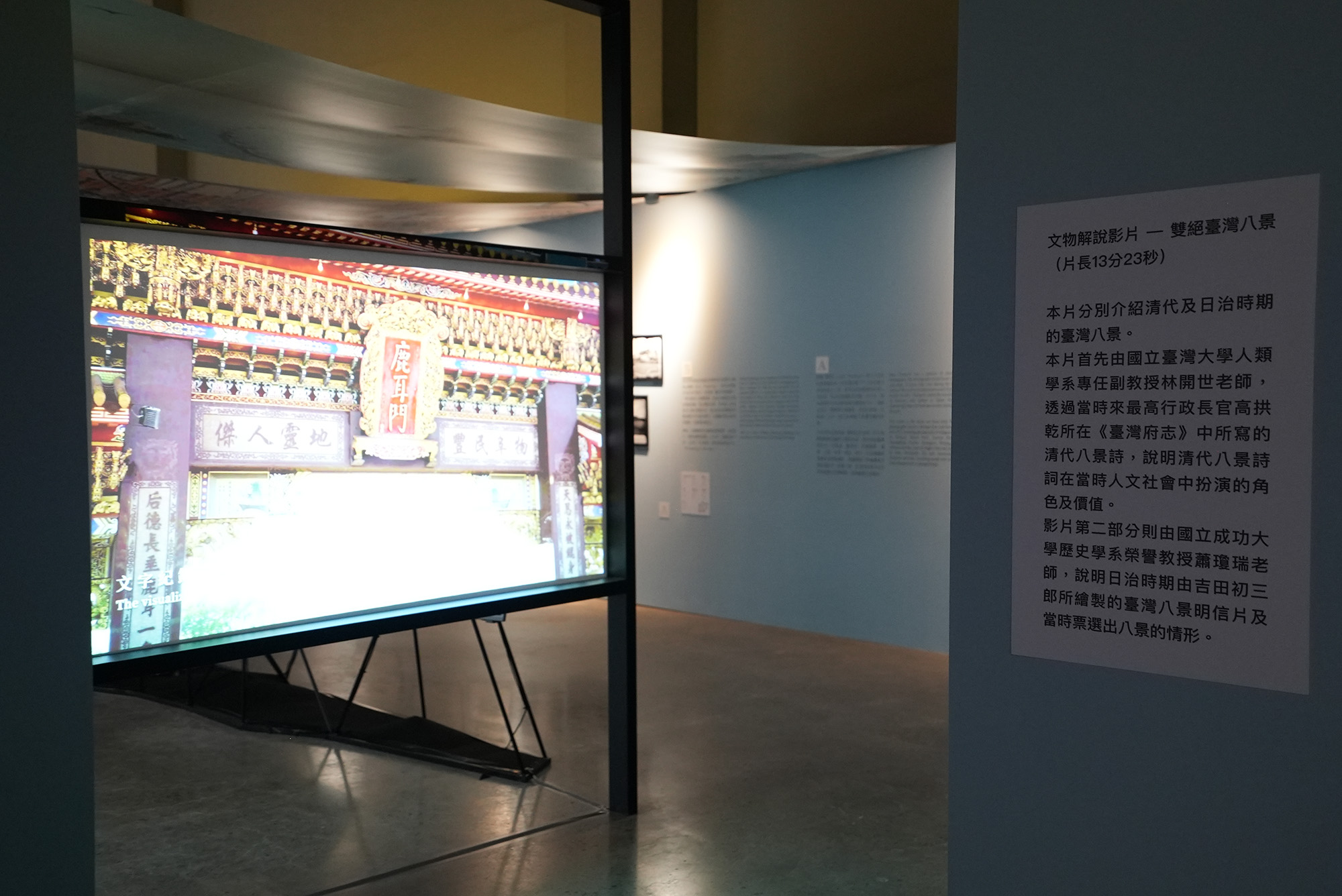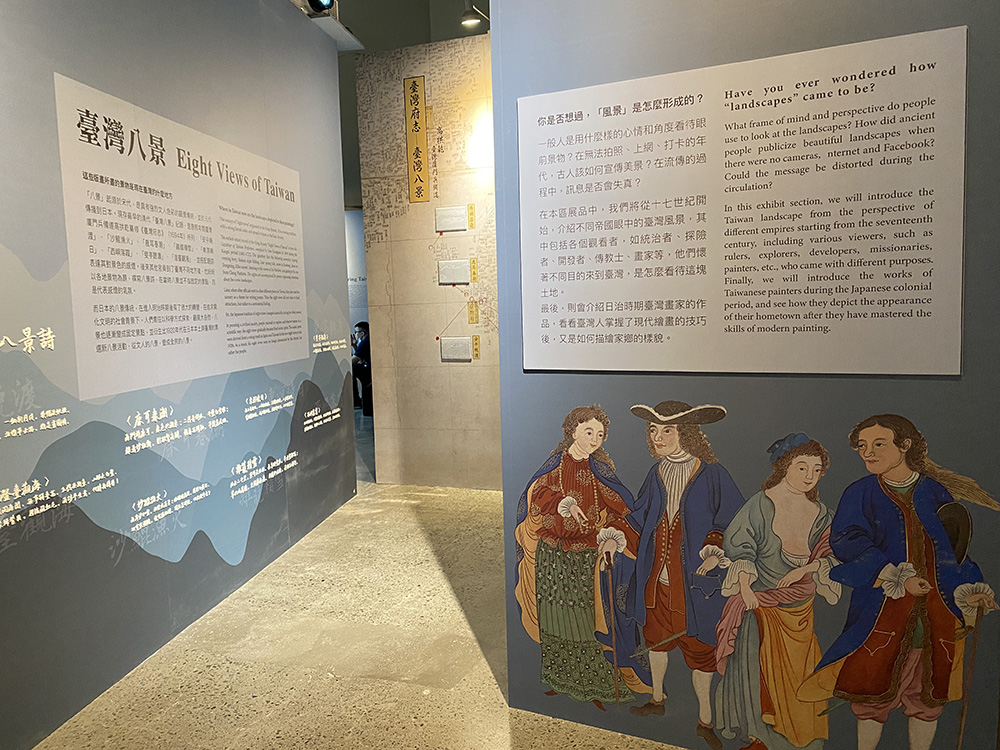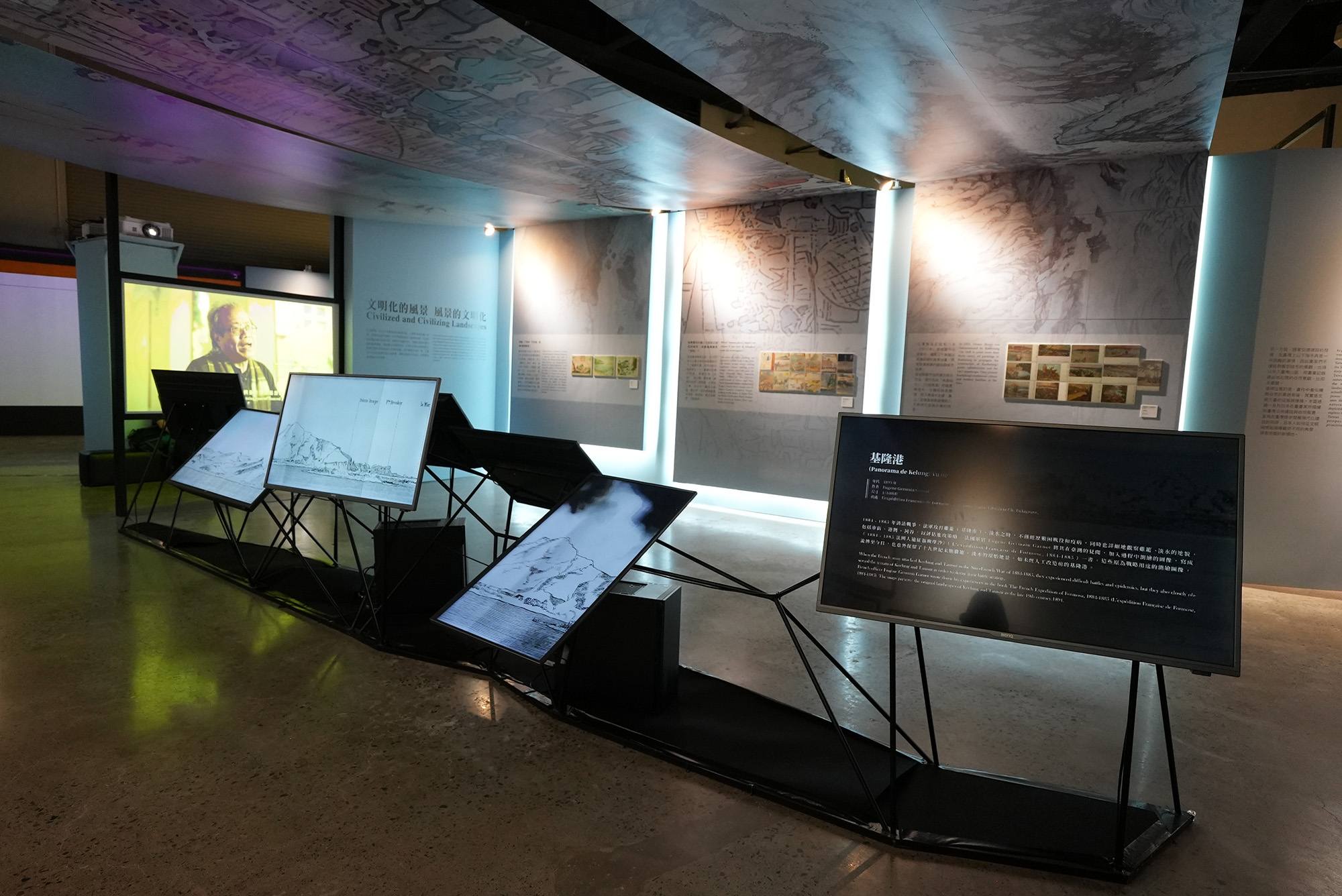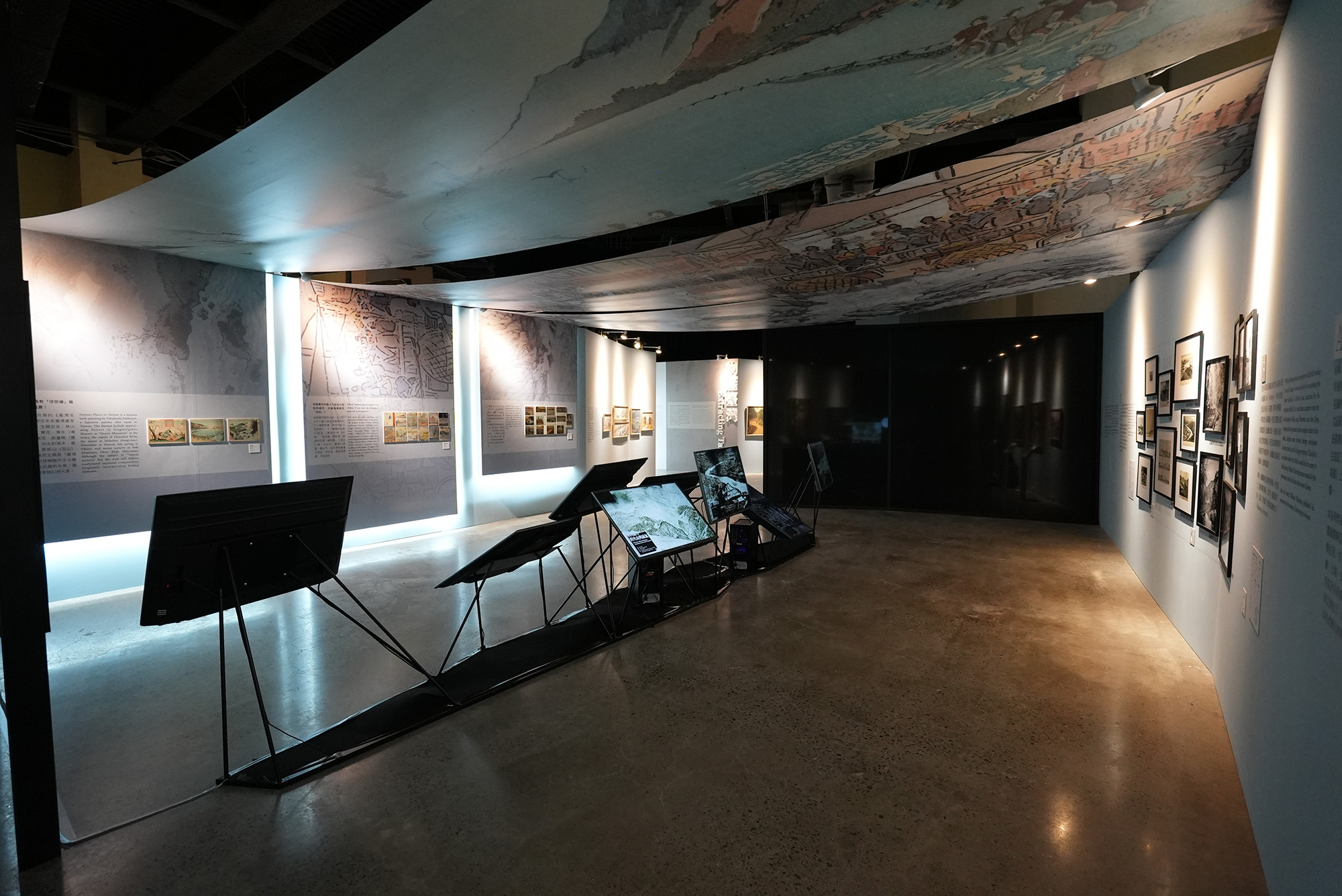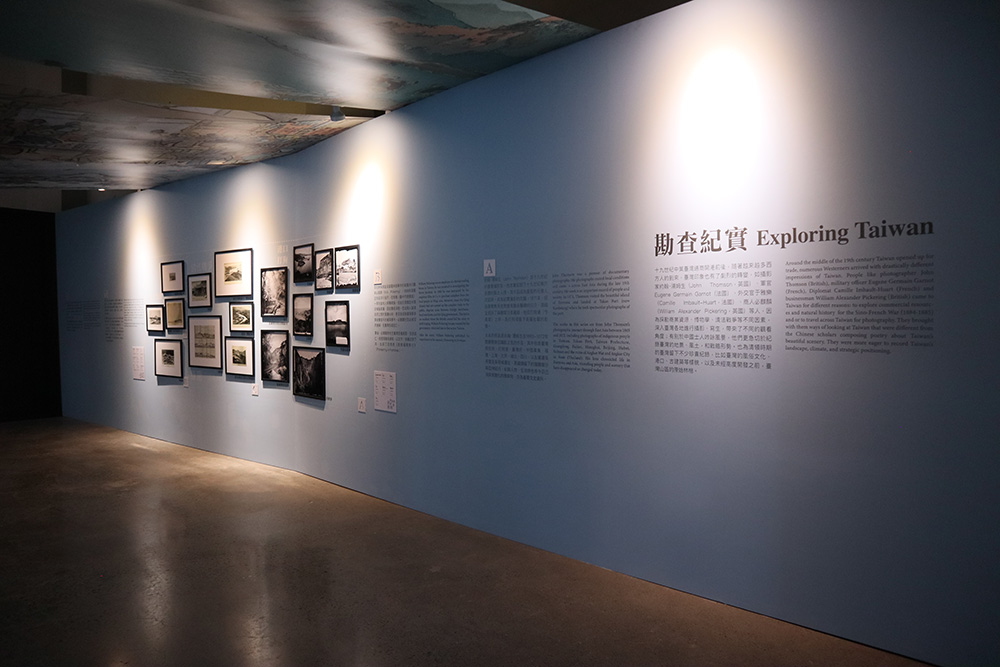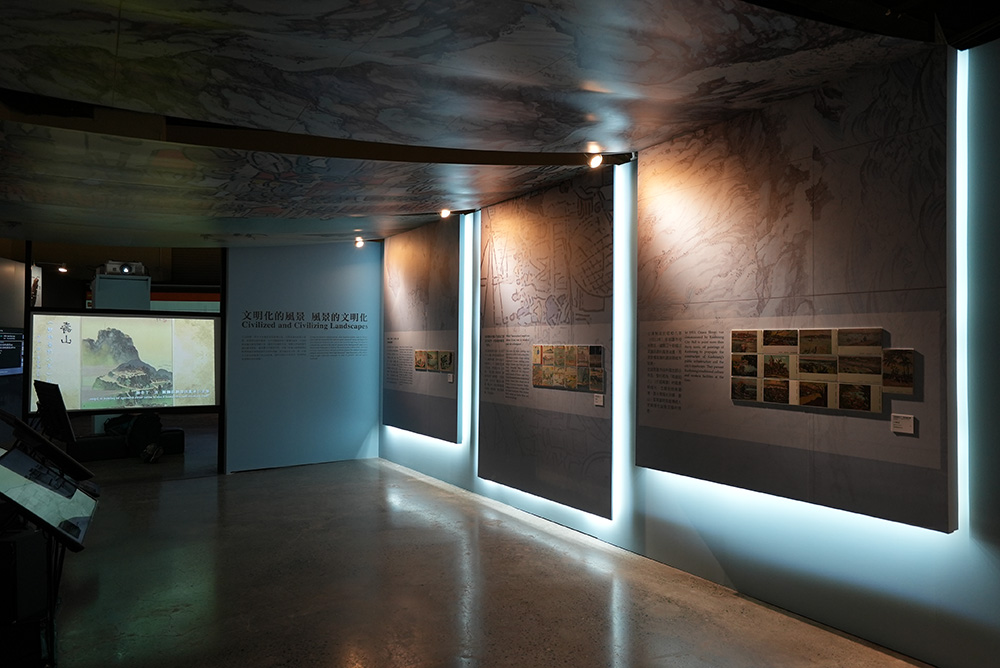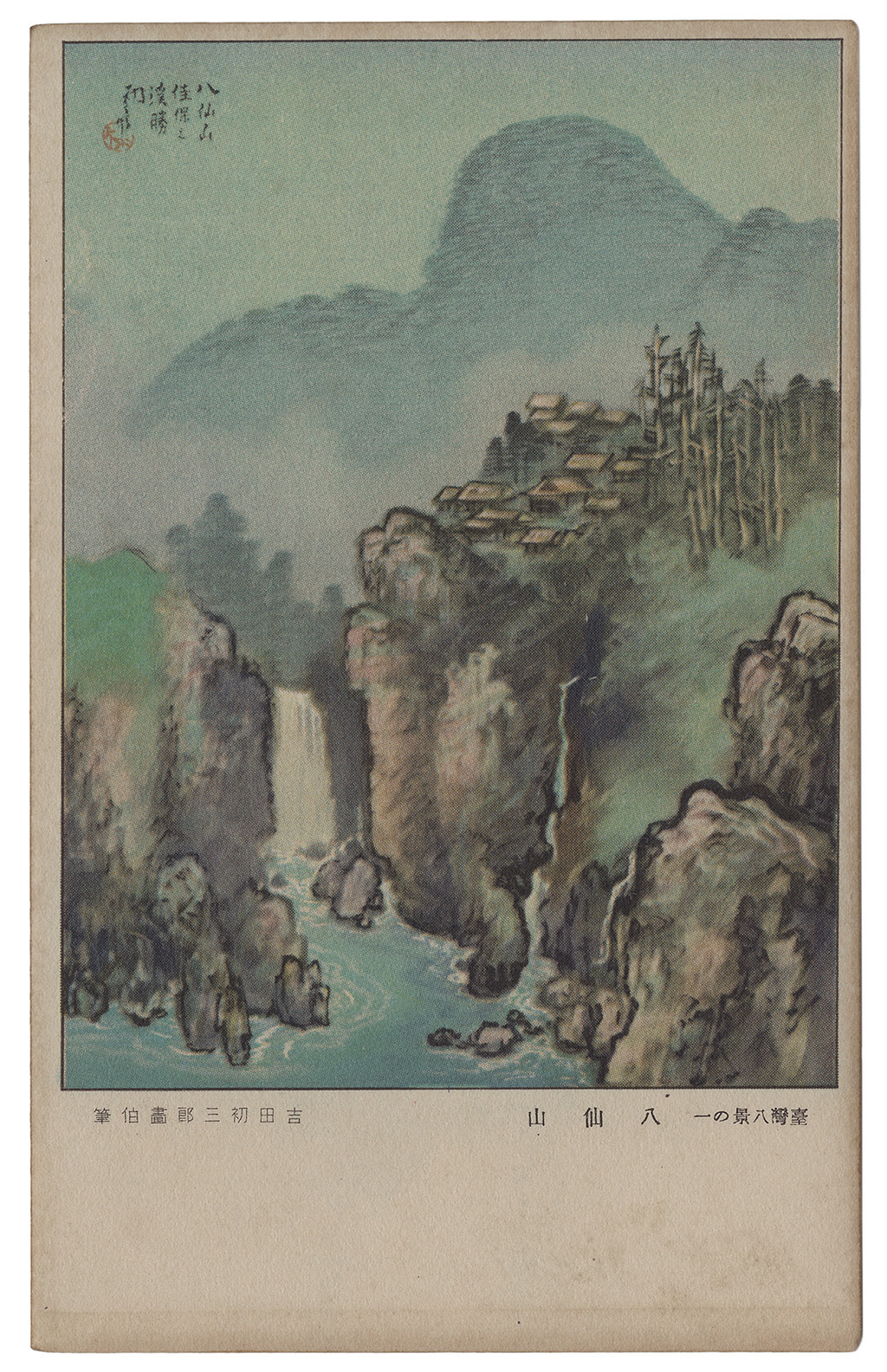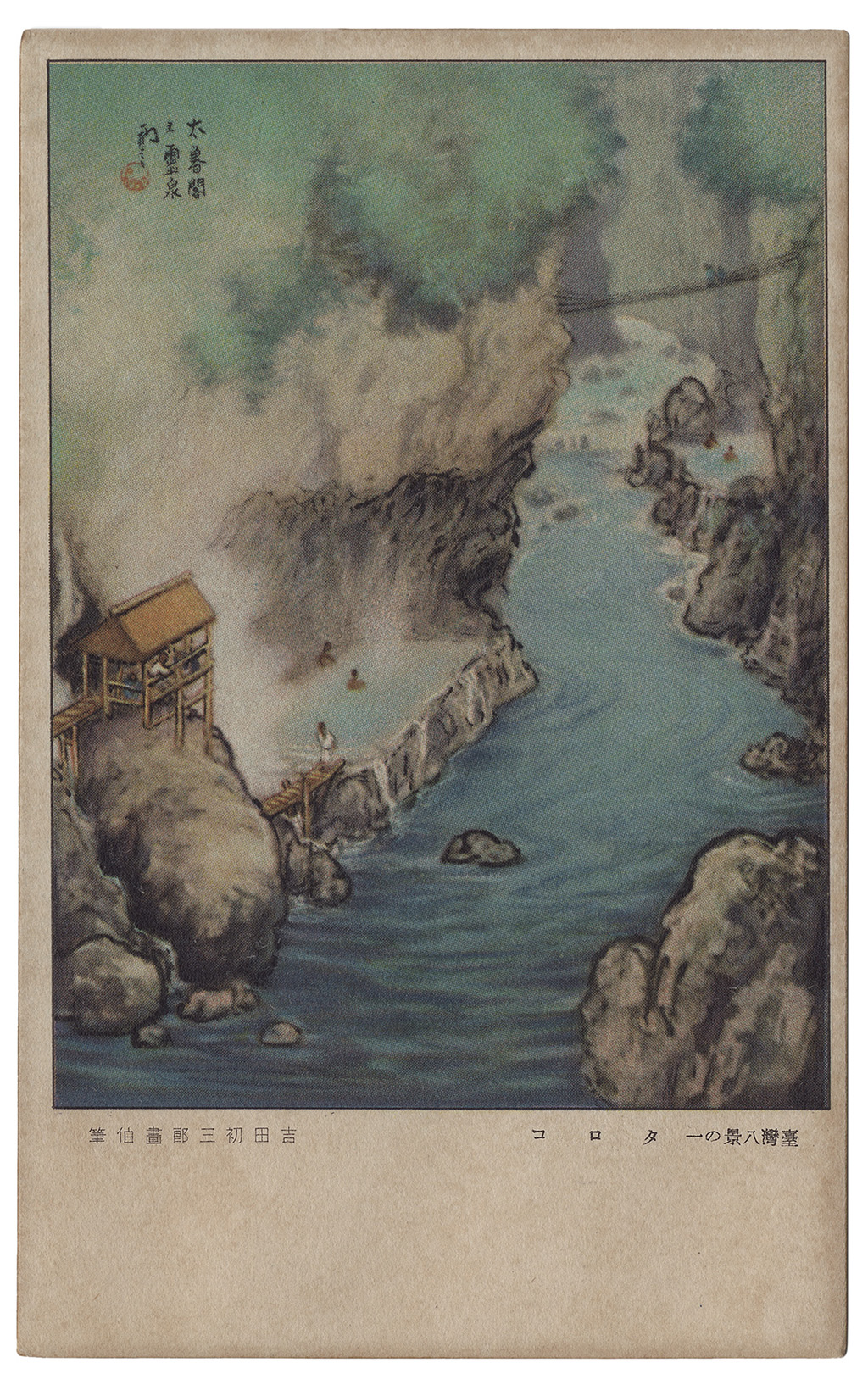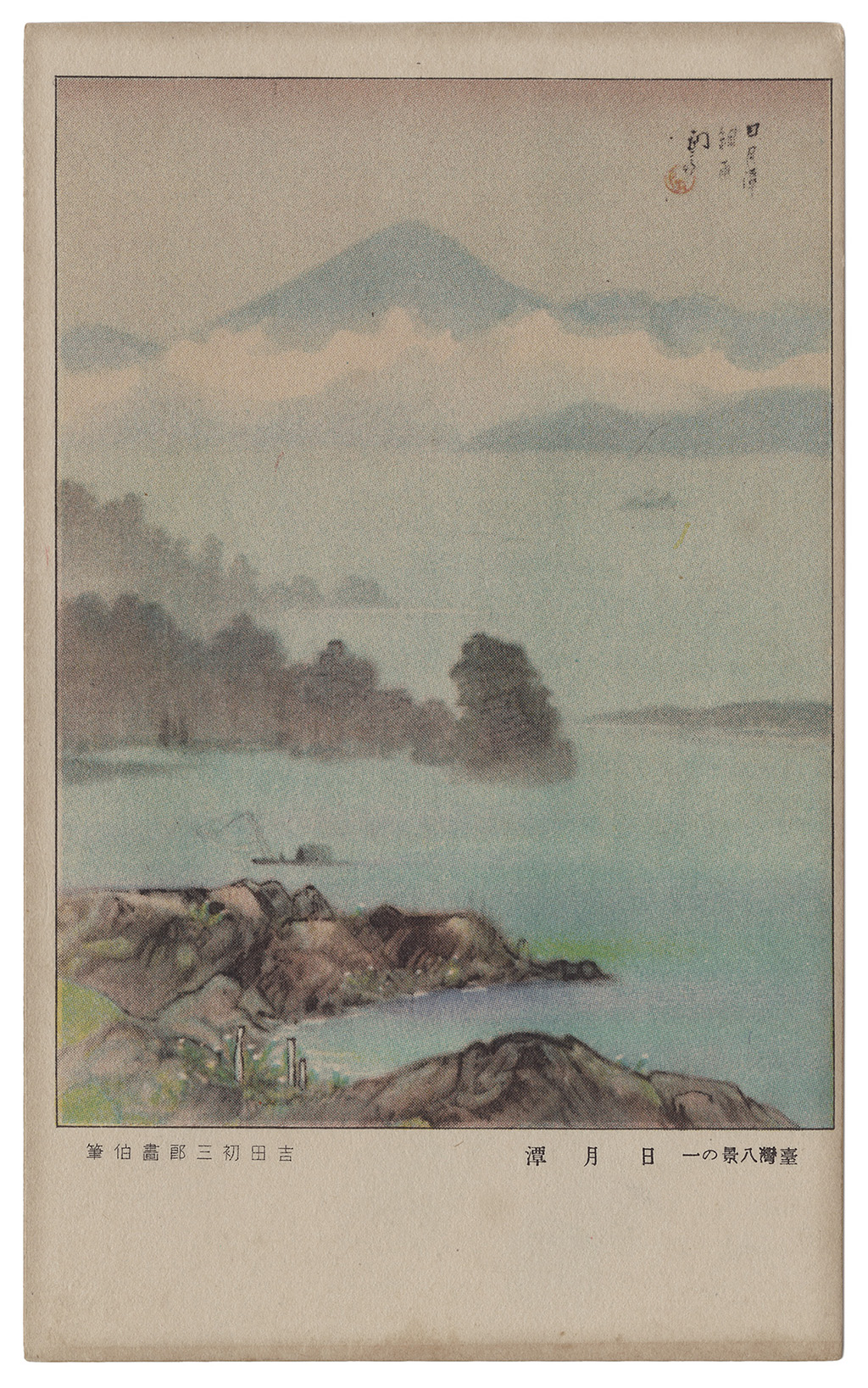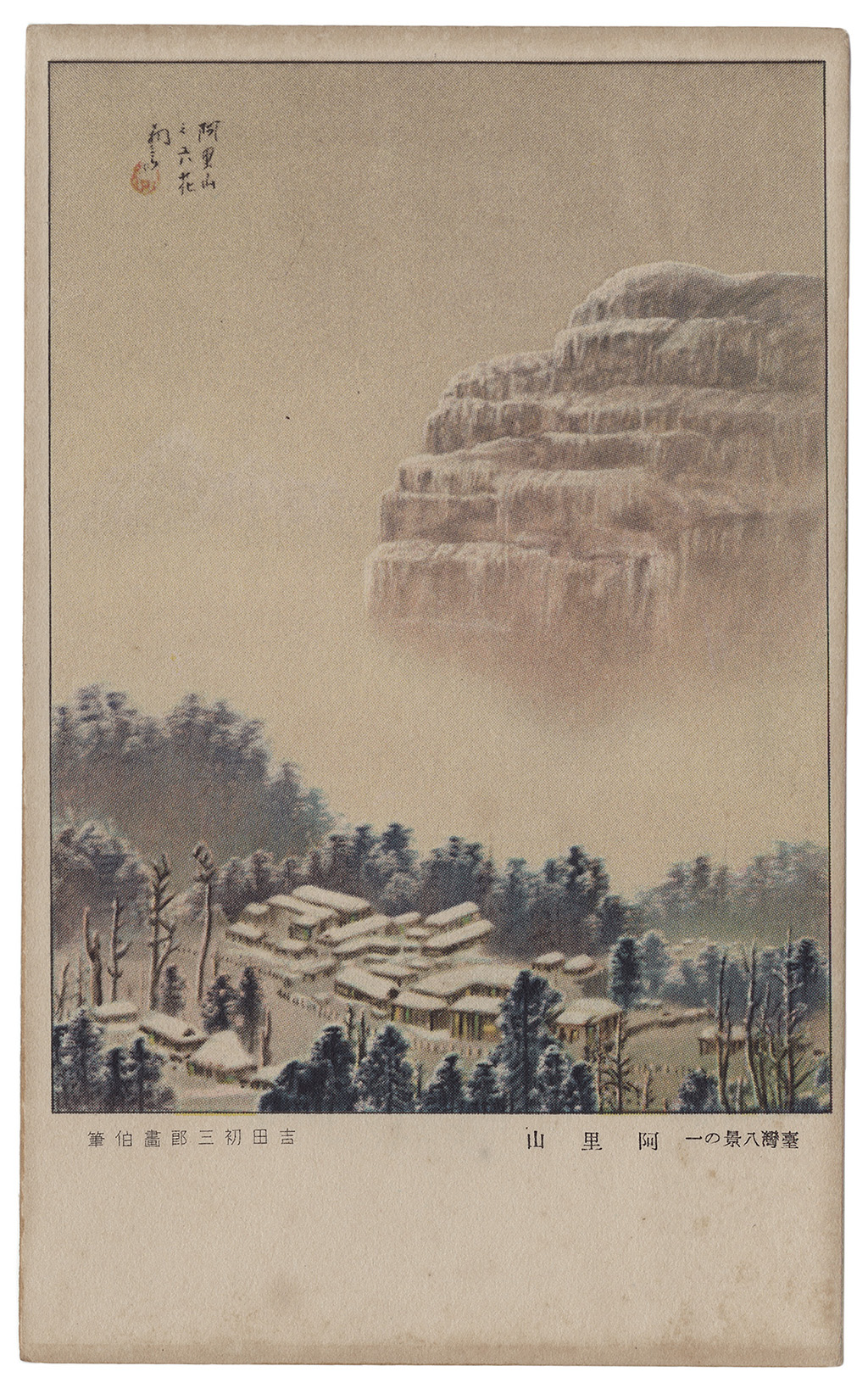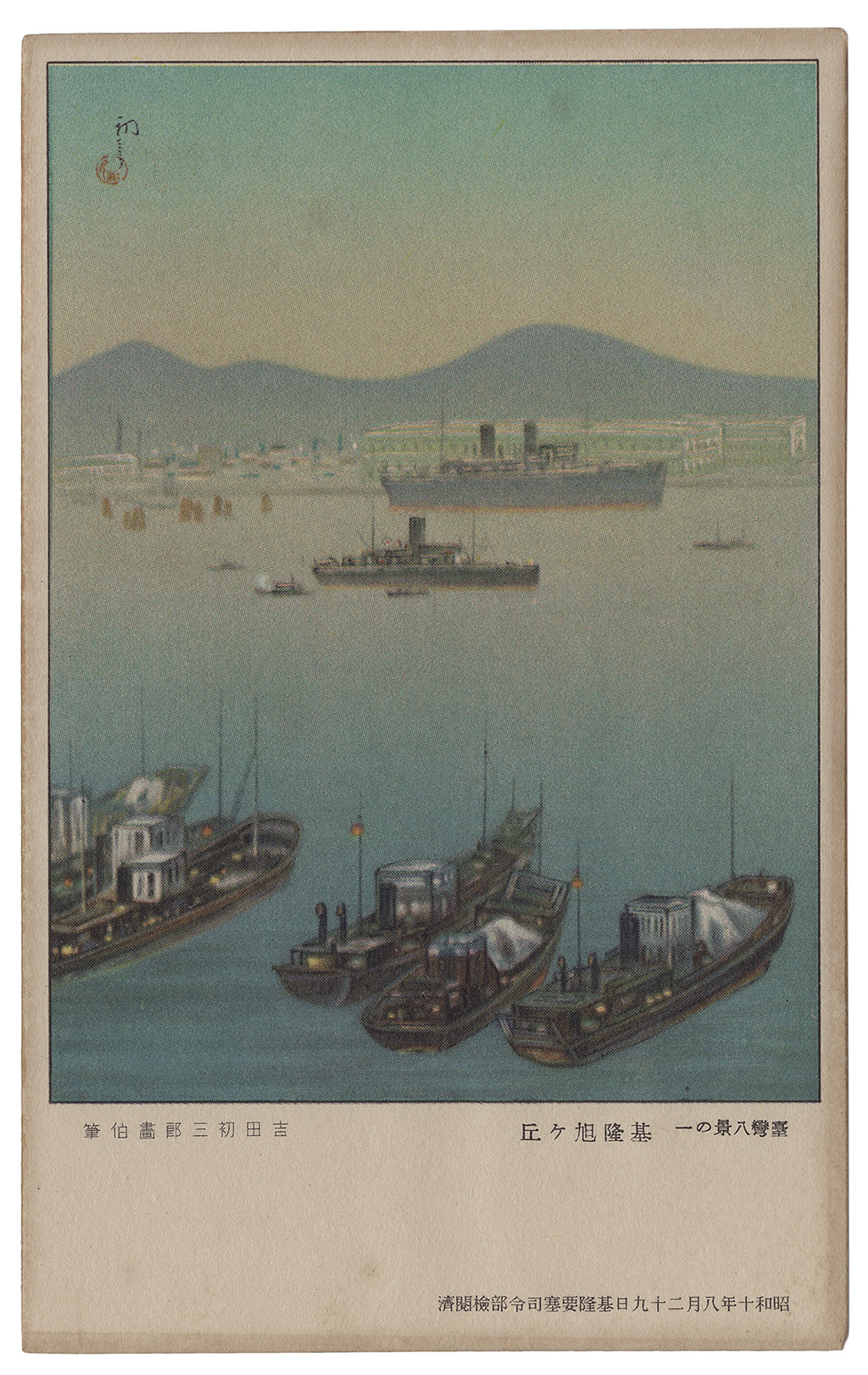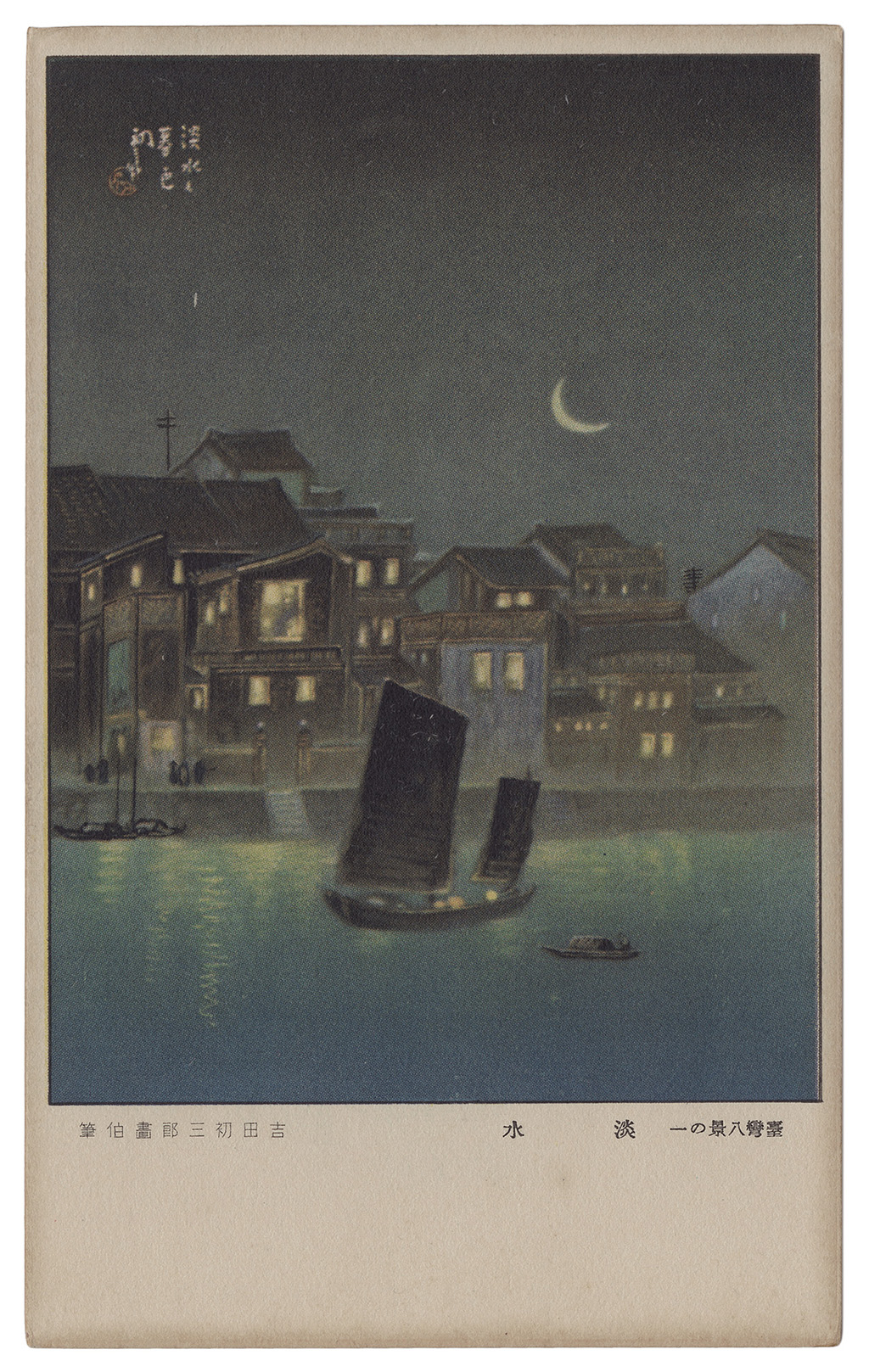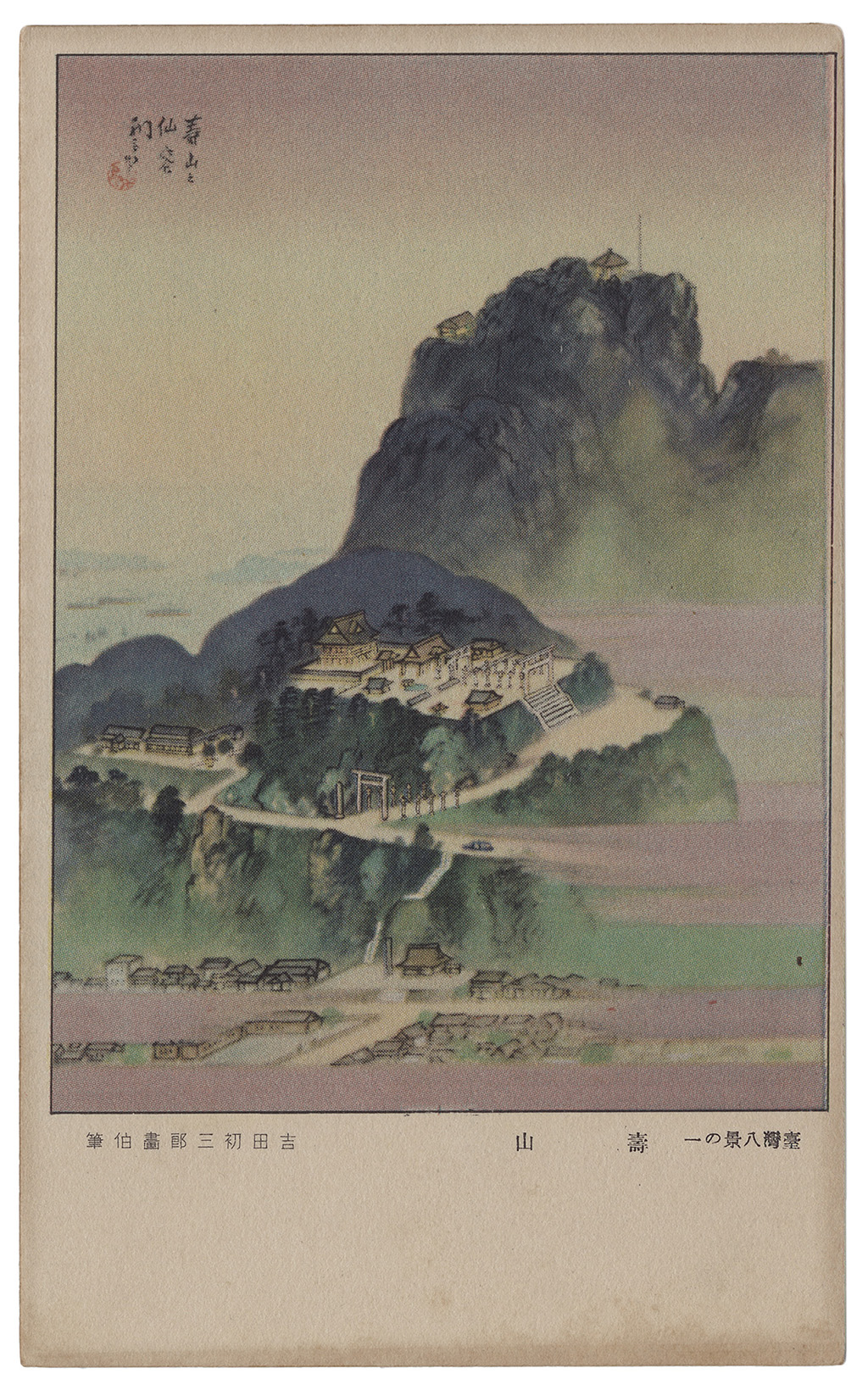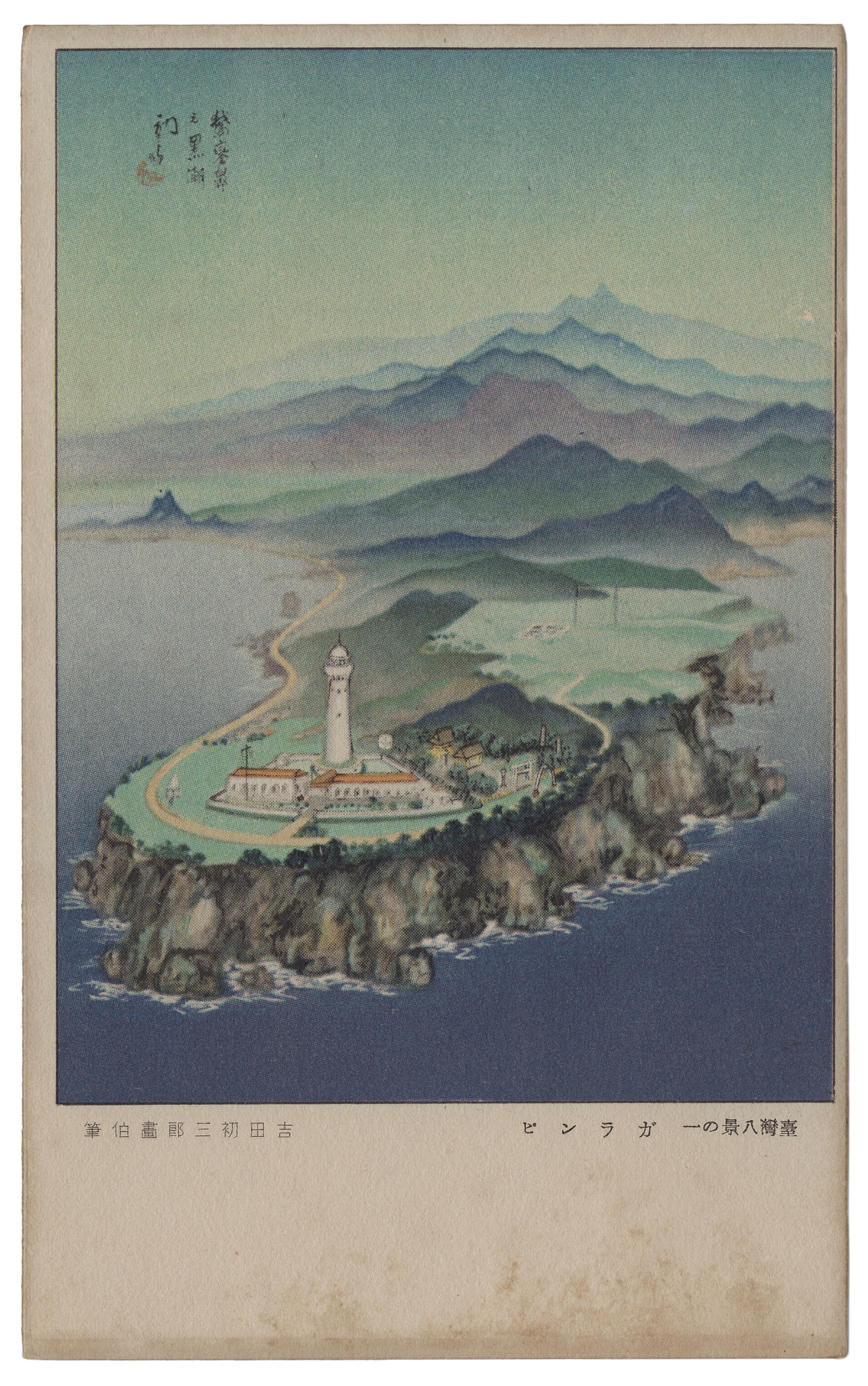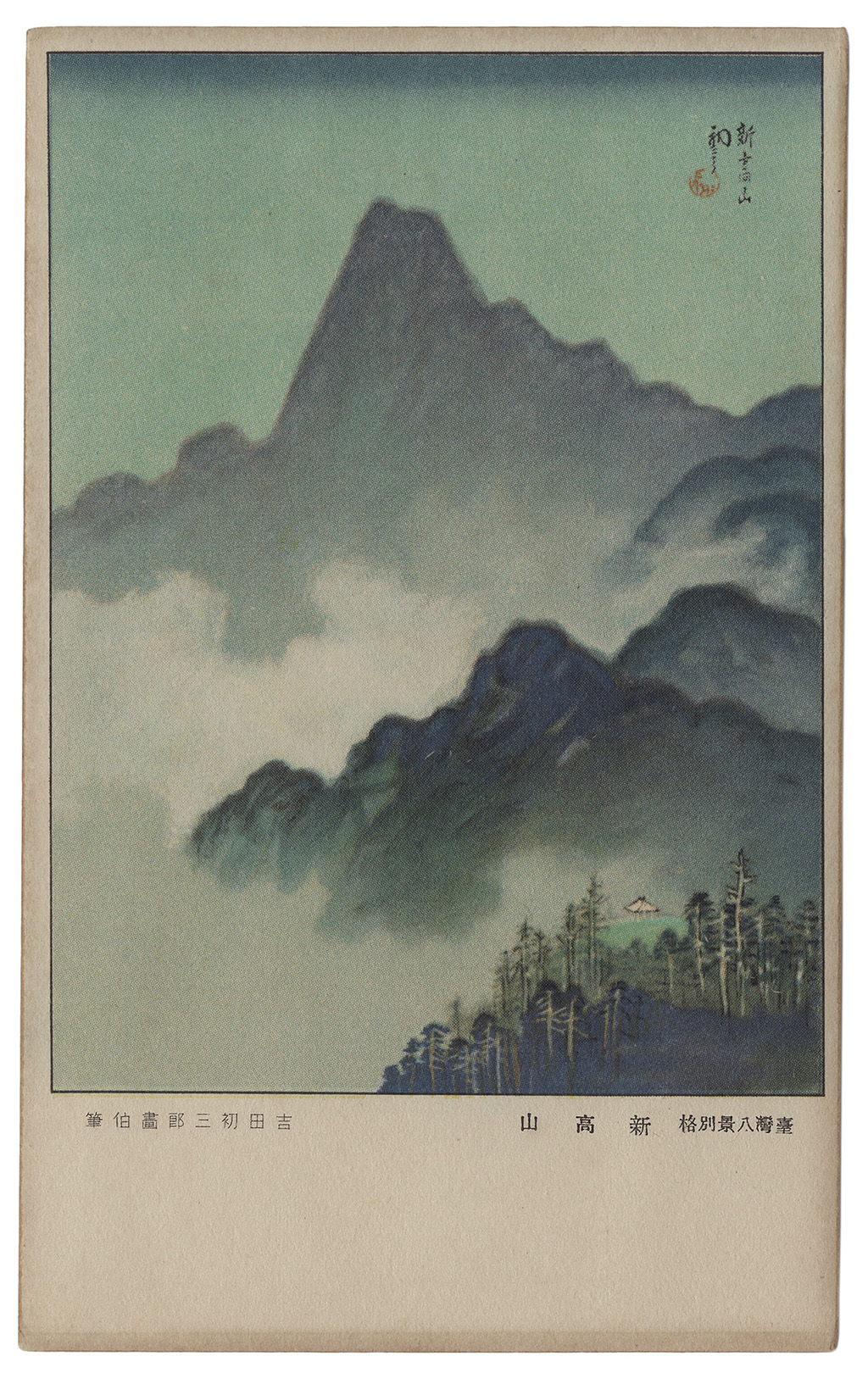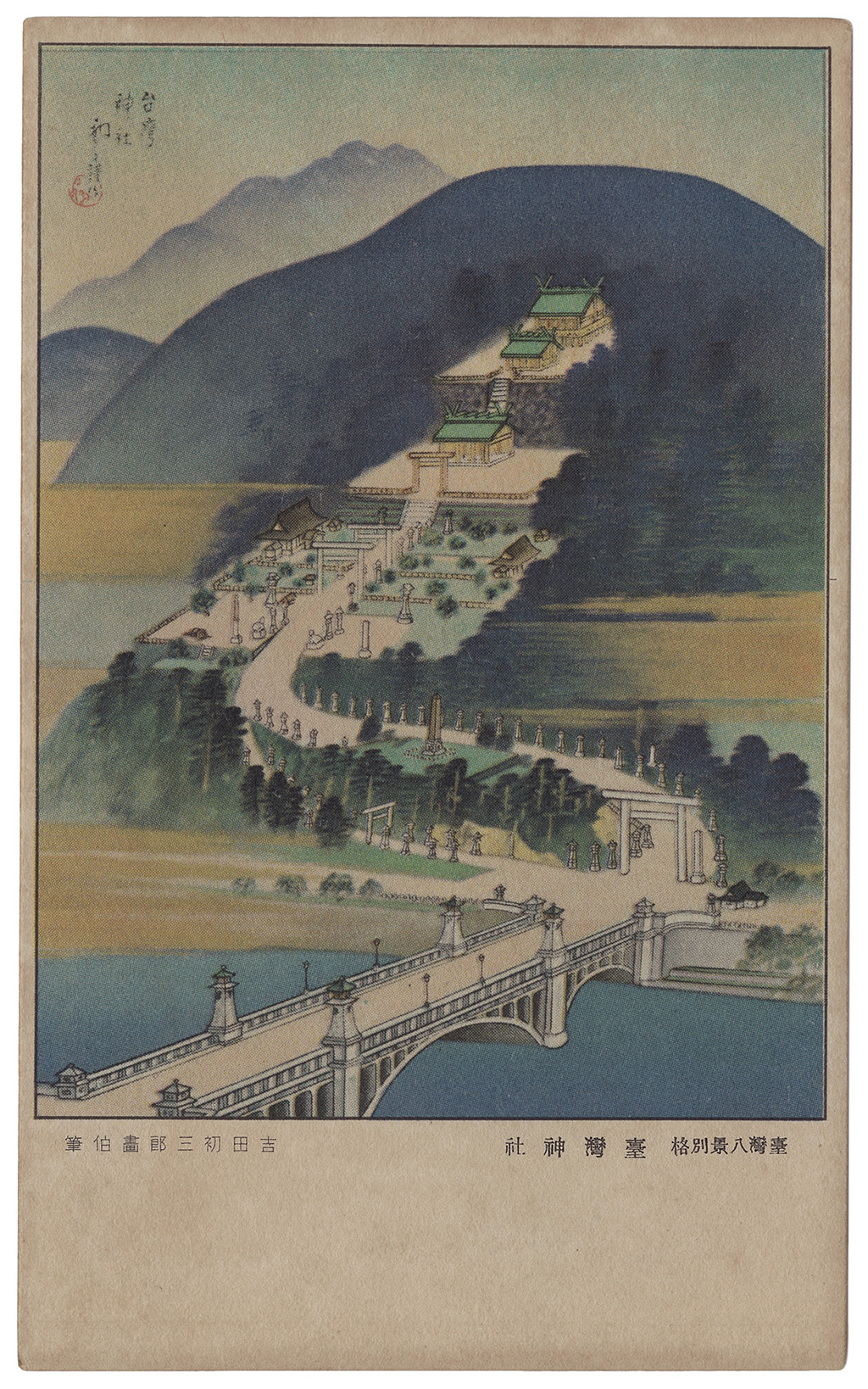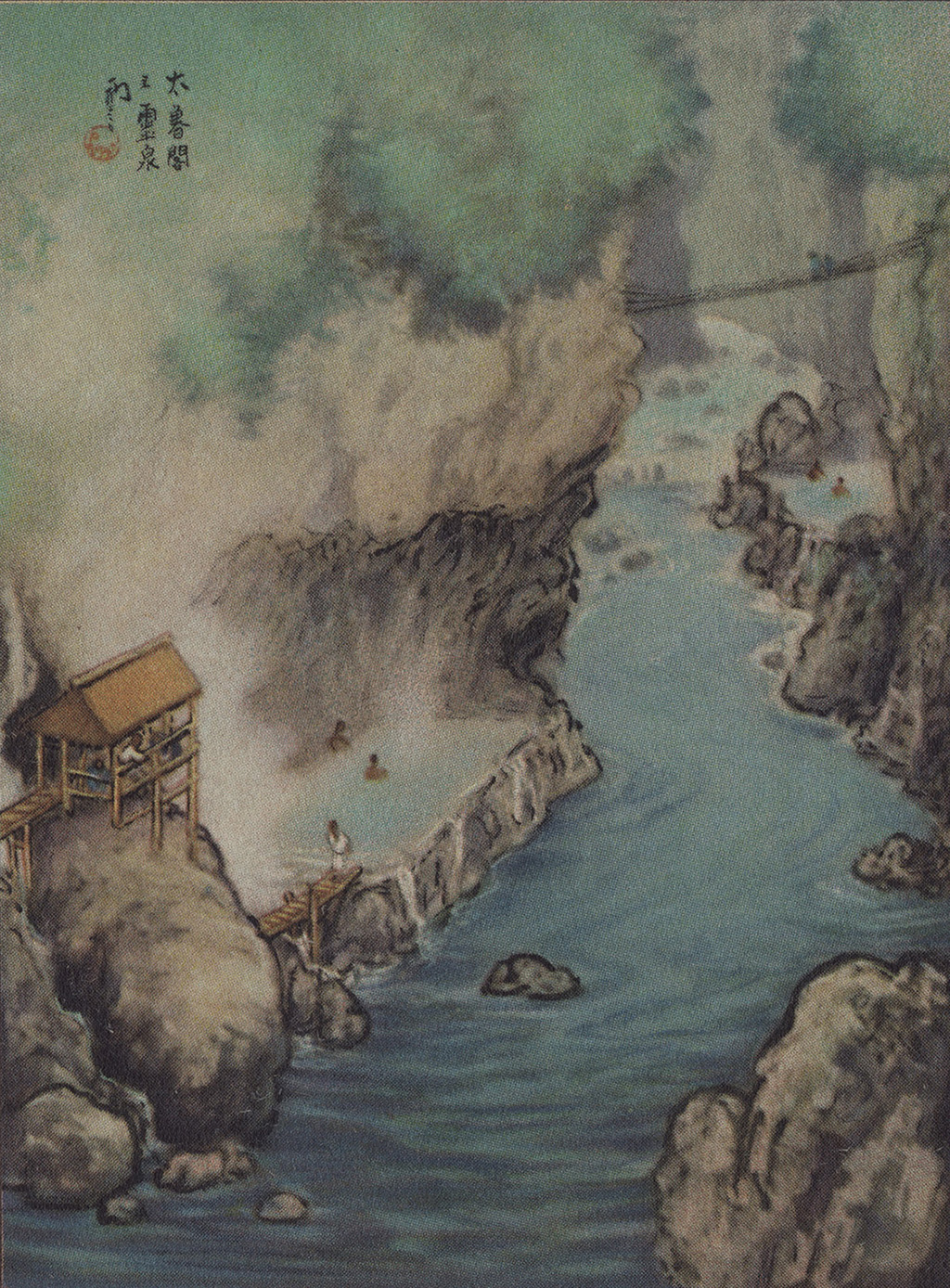Picturing Taiwan
Have you ever wondered how "landscapes" came to be?
What frame of mind and perspective do people use to look at the landscapes? How did ancient people publicize beautiful landscapes when there were no cameras, Internet and Facebook? Could the message be distorted during the circulation? In this exhibit section, we will introduce the Taiwan landscape from the perspective of different empires starting from the seventeenth century, including various viewers, such as rulers, explorers, developers, missionaries, painters, etc., who came with different purposes.
Finally, we will introduce the works of Taiwanese painters during the Japanese colonial period, and see how they depict the appearance of their hometown after they have mastered the skills of modern painting.
The Eight Views of Taiwan
- Taiwan's Eight Views and Two Unique Sights, a set of postcards
- Dimensions: 8.7X14.1 cm
- Historical Period(s): 1935
- Maker(s)/Artist: Yoshida Hatsusaburō
- Collection: National Museum of Taiwan History
The concept of "eight views" originated in the Song dynasty. It is a viewing tradition with a strong literati color, and spread to Japan in the Yuan dynasty.
The earliest extant record of the Qing dynasty "Eight Views of Taiwan" is from the Gazetteer of Taiwan Prefecture , complied by Gao Gongqian in 1694 during the Kangxi period (1661-1722). The gazetteer lists the following sceneries: Anping evening ferry, Shakun night fishing, Luer spring tide, snow in Keelung, dawn in Dongming, Xihu sunset, listening to the waves at Fei Pavilion, and gazing at the sea from Cheng Platform. The sights are accompanied by poems expressing emotions about the scenic landscapes.
Later, when other officials went to other different places in Taiwan, they also took the scenery as a theme for writing poems. Thus the eight views did not refer to fixed attractions, but rather to a sentimental feeling.
Yet, the Japanese tradition of eight views changed drastically during the Meiji period.
In pursuing a civilized society, people yearned to explore and observe nature in a scientific way; the eight views gradually became fixed scenic spots. The scenic spots were derived from a voting result in Japan and Taiwan for the new eight views in the 1920s. As a result, the eight views were no longer determined by the literati, but rather the people.
Yoshida Hatsusaburō was a famous bird's-eye view painter during the Japanese colonial era. In 1935, he was invited by the Government-General of Taiwan to paint "Eight Views and Twelve Sceneries of Taiwan" and the "Bird's-Eye View of Taiwan Series."











